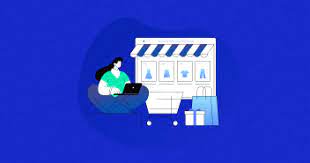Starting and scaling an online store used to be a costly endeavor. From inventory to warehousing, upfront investment often kept small retailers from competing with big brands. But with the rise of dropshipping, e-commerce has become more accessible than ever.
For businesses in the USA and beyond, working with trusted dropshipping companies like TopDawg opens doors to a flexible, low-risk business model that can grow alongside your ambitions.
In this guide, we’ll break down how dropshipping works, why it’s become a go-to model for e-commerce retailers, and how to use it effectively to build or expand your online store.
What Is Dropshipping and How Does It Work?
Dropshipping is a retail fulfillment method where a store doesn’t keep the products it sells in stock. Instead, when a customer makes a purchase, the retailer buys the item from a third party—usually a wholesaler or supplier—who then ships it directly to the customer.
Here’s a simple breakdown:
You list products on your online store.
A customer places an order.
You forward the order to your dropshipping supplier.
The supplier ships the product directly to your customer.
You keep the profit margin between your selling price and the wholesale price.
This method eliminates the need for storage space, reduces overhead costs, and minimizes risk—all while giving you access to a wide variety of products.
Why E-commerce Retailers Choose Dropshipping
Dropshipping is a popular model for first-time entrepreneurs and growing online businesses alike. Here’s why:
1. Low Startup Costs
You don’t need to buy inventory upfront. This drastically reduces your initial investment, making it easier to launch a store on a budget.
2. Wide Product Selection
You can offer hundreds (or thousands) of items without needing to physically manage them. This lets you test product niches and follow market trends with minimal commitment.
3. Scalability
As your store grows, you don’t have to worry about packing more orders or expanding warehouse space. Your suppliers handle that for you.
4. Flexibility
You can run your business from anywhere with an internet connection. It’s ideal for digital nomads, part-time sellers, and full-scale e-commerce operations alike.
Key Features to Look for in Dropshipping Companies
Not all dropshipping platforms are created equal. To build a reliable and profitable business, you’ll need to partner with a provider that meets your needs.
Here’s what to look for:
US-Based Suppliers: Faster shipping times and reliable service for American customers.
E-commerce Integrations: Easy connection with platforms like Shopify, WooCommerce, or BigCommerce.
Real-Time Inventory Syncing: So your site doesn’t sell out-of-stock items.
High-Quality Product Images and Descriptions: To boost conversions and save time.
Order Automation: To reduce manual errors and speed up fulfillment.
Platforms like TopDawg specialize in helping U.S. retailers connect with vetted suppliers and streamline every step of the dropshipping process.
How to Choose Your E-commerce Platform
Your e-commerce platform is the backbone of your online business. Choosing one that works well with dropshipping tools can save you a lot of time and tech headaches.
Here are the top platforms used by dropshippers:
Shopify
Extremely user-friendly
Wide selection of dropshipping apps and plugins
Great for beginners and growing brands
WooCommerce (on WordPress)
Free and customizable
Ideal for people comfortable with tech
Works well with various supplier plugins
BigCommerce
Scalable for larger operations
Built-in features tailored for dropshipping
Supports multiple payment gateways
TopDawg offers integrations with several popular platforms, allowing you to import products and automate order processing in just a few clicks.
Best Practices for Running a Dropshipping Business
Once your store is live, your success depends on how you manage operations, marketing, and customer experience.
1. Niche Down
Don’t try to sell everything to everyone. Focus on a specific product category or target audience. For example, pet products, eco-friendly kitchenware, or fitness gear.
2. Optimize Product Listings
Use high-quality images, persuasive product descriptions, and clear pricing. Make sure product specs (like sizing or materials) are easy to understand.
3. Offer Competitive Shipping
Customers expect fast and affordable delivery. Choose suppliers with fast shipping times and communicate clearly about delivery expectations.
4. Customer Service Matters
You may not handle the product directly, but you’re still responsible for the customer experience. Respond quickly to questions, handle returns professionally, and resolve issues proactively.
5. Analyze and Adapt
Use tools like Google Analytics, Facebook Pixel, and platform reports to understand your traffic, conversions, and top-performing products. Use this data to refine your marketing and inventory strategy.
Marketing Tips for Dropshipping Stores
With no physical storefront, your ability to attract traffic depends on smart digital marketing. Here’s where to focus:
1. Social Media Ads
Use platforms like Facebook, Instagram, and TikTok to run targeted campaigns. Start small, test creative angles, and scale what works.
2. Email Marketing
Build a list and send out product updates, sales, and value-driven content. Email marketing is still one of the best ways to drive repeat purchases.
3. SEO (Search Engine Optimization)
Write product descriptions, blog posts, and guides that answer customer questions and include keywords your audience searches for. SEO brings in long-term, organic traffic.
4. Influencer Marketing
Partner with micro-influencers in your niche. Even small accounts with engaged audiences can generate strong sales when paired with the right product.
5. Retargeting
Use Facebook or Google ads to retarget visitors who didn’t buy on their first visit. Retargeted traffic often converts at a much higher rate.
Common Mistakes to Avoid
While drop shipping is simple to set up, there are pitfalls you should watch out for:
Choosing unreliable suppliers
Ignoring customer service
Selling poor-quality products
Relying only on one marketing channel
Not tracking profitability
Vet your suppliers, stay on top of your numbers, and treat your business like a real brand—not just a side hustle.
The Future of Dropshipping
Dropshipping continues to evolve. As customer expectations rise and competition increases, successful sellers will be the ones who:
Focus on customer experience
Offer unique or branded products
Build trust with clear policies and fast communication
Use automation tools to streamline their workflow
Continuously test and optimize their strategies
With powerful platforms like TopDawg offering advanced tools, curated supplier networks, and integrations with major e-commerce platforms, there’s never been a better time to get into dropshipping or scale your existing store.
Final Thoughts
Dropshipping isn’t just a trend—it’s a legitimate and profitable business model for online sellers who want to minimize risk while maximizing reach. Whether you’re just starting your first Shopify store or looking to diversify your current product offerings, working with trusted dropshipping companies ensures your foundation is solid from day one.
If you’re serious about growing your e-commerce business and want access to quality U.S.-based suppliers, automation tools, and seamless integrations, TopDawg is a smart choice.


